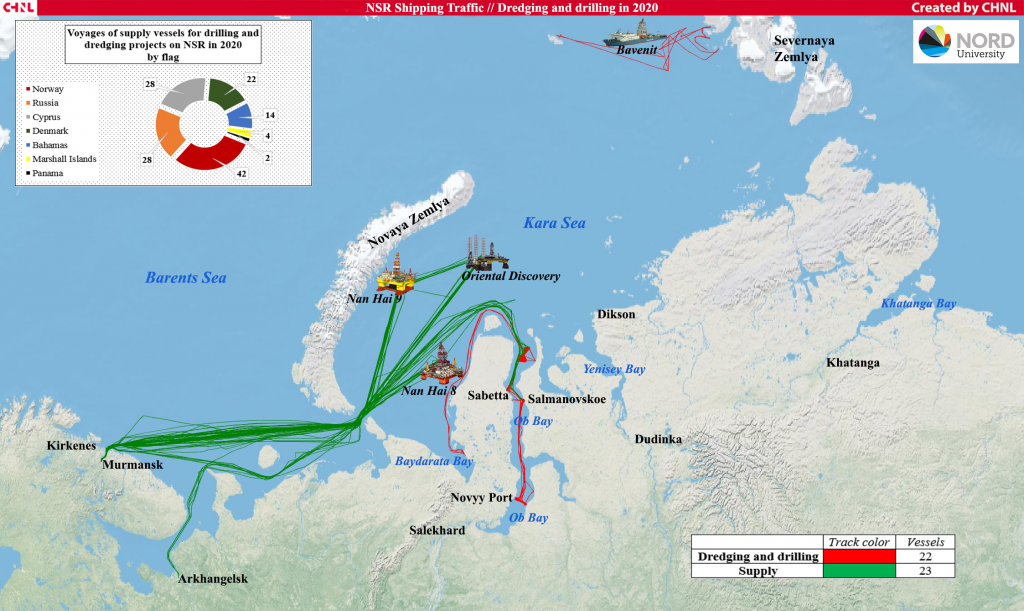NSR Shipping Traffic – Dredging and drilling in 2020
In 2020, comprehensive dredging and drilling operations were carried out in the water area of the Northern Sea Route.
As for the drilling works, 3 drilling rigs and 1 drilling vessel were involved in their implementation. In accordance with the agreement between Arctic Scientific Center LLC (part of the corporate research and development complex of Rosneft Oil Company) and RosGeo JSC, “Bavenit” vessel carried out a complex of research works using shallow drilling technology (from 40 to 200 m) wells with full core samples collection, as well as geophysical studies of drilled wells in the northeastern part of the Kara Sea near the Severnaya Zemlya archipelago. Research is necessary to improve the reliability of the forecast of oil and gas prospects of sedimentary basins of different ages in the Arctic.
The Chinese drilling rig Nan Hai Jiu Hao (Nan Hai 9), owned by China Oilfield Services Limited (COSL), has drilled a new well Vikulovskaya-1 at the Vostochno-Prinovozemelskiy-1 area (owned by Rosneft). The second rig is Nanhai Bao Hao (Nan Hai 8), also owned by COSL, was involved to drill exploratory well No. 5 at the Leningradskoye gas condensate field for Gazprom Nedra LLC. The third rig, Oriental Discovery (owned by Tianjin CSSC) drilled the Ragozinskaya-1 exploration well at the Vostochno-Prinovozemelsky-2 area for Rosneft.
A lot of work has been done in the dredging area. A total of 18 dredging vessels were involved. The main geography of the work was in the Ob Bay, there were reconstruction of the “Sea Canal” facility (a navigation approach channel in the Ob Bay of the Kara Sea). The total volume of excavated soil amounted to more than 32 million cubic meters. The dredging and auxiliary fleet was mobilized from various ports in Europe and Russia – Antwerpen, Bremerhaven, Amsterdam, Rotterdam, Murmansk and Arkhangelsk. The transition of the dredging convay to the facility took from 4 to 35 days. During the dredging works, constant environmental monitoring was carried out. All vessels left the Ob Bay before the beginning of ice formation.
Dredging will continue in 2021. The width of the canal on the straight section will be increased by 180 meters – up to 475 meters, and on the turning section by 278 meters – up to 573 meters. The length of the canal will increase from 48.9 km to 51.6 km, and the depth will be 15.1 meters.
In addition to dredging in the Ob Bay, such work was also required in the Baydarata Bay, where a total overhaul of the underwater crossing of the 1st string of the Bovanenkovo – Ukhta gas pipeline was carried out. As a method of restoring the design position of the pipeline, the method of “replanting” was chosen: the replacement of the surrounding soil with non-liquefiable rocky soil – crushed stone. In accordance with the design solutions, the underwater section was deepened to exclude possible risks of damage from grounded hummocks.
For the stable operation of drilling sites and dredging vessels, 23 supply vessels were involved, that in total performed 140 voyages. The largest amount of work was done by supply vessels under the Norwegian flag, followed by the Russian flag (see graph on the map).

